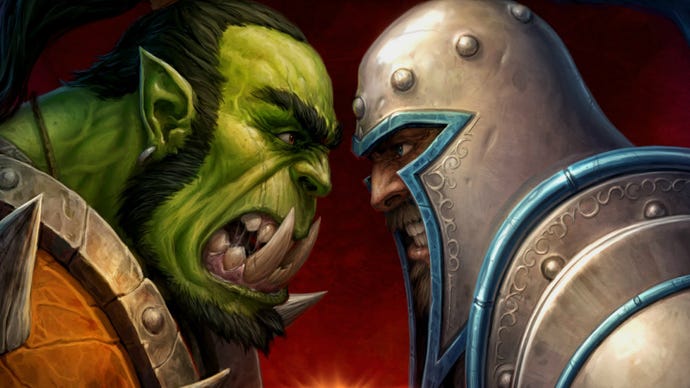How Warcraft's Art Has Evolved and Shaped Blizzard's Games Over 25 Years
Blizzard senior art director Samwise Didier takes us through the 25 year evolution of Warcraft's art.
This article first appeared on USgamer, a partner publication of VG247. Some content, such as this article, has been migrated to VG247 for posterity after USgamer's closure - but it has not been edited or further vetted by the VG247 team.
Warcraft is a bonafide cultural icon. World of Warcraft might be a far from its heyday as the biggest name in gaming, but it's still played monthly by millions of players. Hearthstone is still a wildly successful spinoff and Warcraft 3 is getting a new lease on life with Warcraft 3 Reforged. Over the years, it's had successful commercials, an unsuccessful film adaptation, and reams of comics and novels. It's almost been 25 years since November 23, 1994, when Warcraft: Orcs & Humans first debuted on PC, and Warcraft is still kicking.
At an event to talk about all things Warcraft, I had a chance to sit down with Blizzard Entertainment senior art director Samwise Didier. In his current position, Didier oversees the look and feel of all of Blizzard's titles, while also managing the look of licensed products. He's also the lead singer in Level 90 Elite Tauren Chieftain, the Blizzard-based metal band.
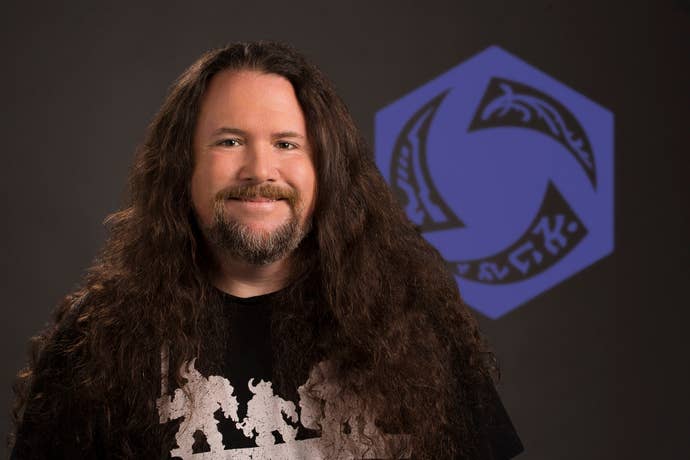
Most importantly though, Didier has been with Warcraft since the beginning, starting as an artist at Blizzard in 1991. He was there when the studio first broke ground on the franchise. Didier remembers being a young artist in a studio that worked fast and tried new things. The original game was developed by combining disparate ideas from Blizzard's own The Lost Vikings, real-time strategy (RTS) games like Dune 2, and Lemmings. Warcraft didn't have a script, and the team was throwing concepts out to see what worked.
"I was very junior and young on that first one. We were limited by what we could do with the programs we were working on," Didier tells me. "We were coming up with, 'What are the things that we want to do?' We had guys coming with ideas from their [Dungeons & Dragons] groups, from Lord of the Rings. We had all these ideas of different things we could do." Keeping it simple and relying on fantasy tropes that players might already be familiar with was the basis from going with Warcraft's core conflict. "Orcs and Humans, those are the kind of classic good guys vs. bad guys that a lot of people would know. Back then we wanted things that a guy who had seen a movie or read Lord of the Rings would know. From then on, we were trying to build things that weren't too far out, that people wouldn't relate to. At the very beginning, it was very simple. We wanted humans to be the good guys and orcs to be the bad guys. Orcs were green and brutal, and humans were noble and knightly."
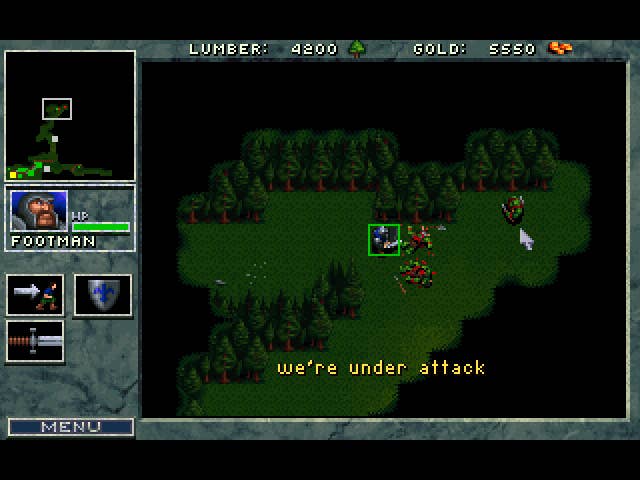
Blizzard was a small team in those days, and Didier notes that Warcraft was developed in "a matter of nine months". The art team wasn't completely segmented like modern development, so every artist had to do a little bit of everything.
"Development was a lot different back then, we didn't do concepts. We'd be like, 'Here's the artwork for the grunt," and that's what it was. We didn't think it out, we didn't go, 'Which axe would go best with this?' It's a group of eight pixels with a little bit of red. It was very loose," he explains.
Warcraft: Orcs & Humans was a moderate success for the small studio, and Warcraft 2 came only a year later. The first game kept it simple, but the second offered Blizzard an existing audience that had bought into concept, allowing it to expand. While Warcraft's art was rooted in normal European medieval fantasy, Warcraft 2: Tides of Darkness is when Blizzard started to get creative in terms of art and storytelling. It would introduce characters like Thrall and Jaina Proudmoore, and locations like Theramoore and the Dark Portal, which remain part of World of Warcraft's lore today.
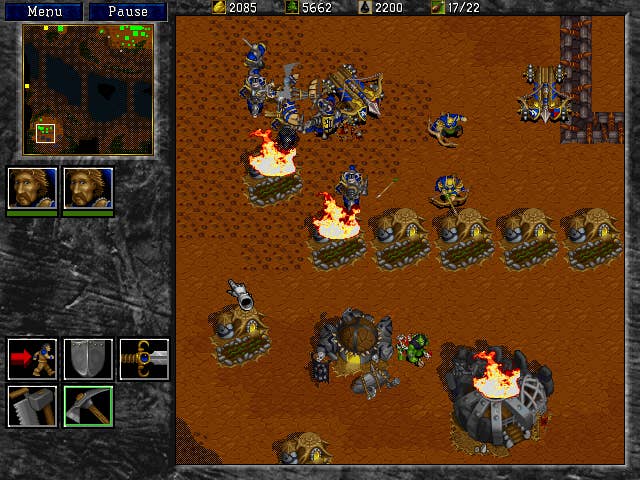
Didier notes that Warcraft was part of forging the Blizzard art style. "Nowadays you have a lot of game with sort of a Blizzard art style, but when we made Warcraft it was pretty unique. People had an idea of fantasy that was dark, sort of heavy. Warcraft had a bit more hyper-fantasy to it," he says. Blizzard's games were a little brighter, a little more cartoon-inspired compared to its counterparts, who drew from Dungeons & Dragons artwork or the famous Frank Frazetta paintings.
While Warcraft 2 was a continuation of the success Blizzard had with Warcraft: Orcs & Humans, Warcraft 3: Reign of Chaos is where Didier says Blizzard came into its own. Warcraft 3 not only continued the story from the second game, it built upon it with cinematics, voice acting, and more.
"In the first one, we didn't even have Elves. Warcraft 2 allowed us to start branching into stuff like Dwarves, Trolls, Elves, and Goblins," Didier says. "[Warcraft] was the first concept of what it could be, Warcraft 2 is where we started putting our stamp on fantasy, and Warcraft 3 is where we came into our own. Warcraft 3 is where we really built up: we invented Night Elves, Tauren, and all these different races. Coming up with world, story, and cinematics all on the same level."
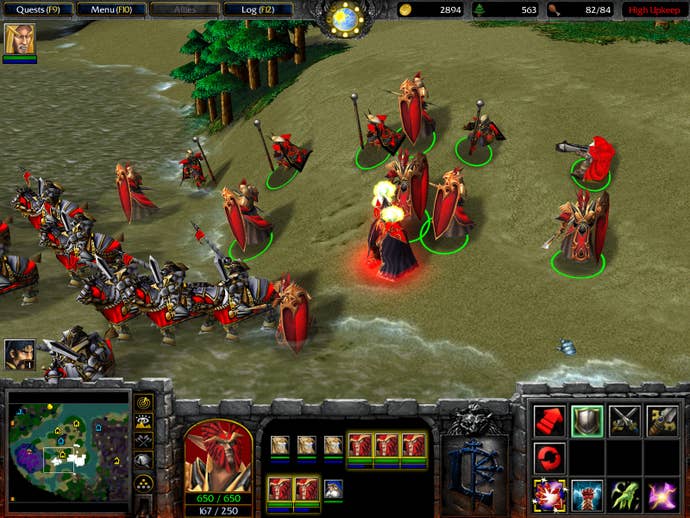
Warcraft 3 also marked the shift to 3D models, rather than 2D sprites for the units, buildings, and overall world. Didier says this opened things up for Blizzard, because the artist no longer had to worry about building animations for each direction a unit could face. And this shift in art direction and creation led into the game that would expand Warcraft to a much larger audience: World of Warcraft.
World of Warcraft wasn't the first MMORPG, but it successfully built upon what came before, like Ultima Online and Everquest. On top of tried and true MMO mechanics, Blizzard added an additional level of design and aesthetic polish. Nothing else really looked like World of Warcraft, except Warcraft 3. And for players of the previous Warcraft games, World of Warcraft was like stepping into a new world. "People who had been playing Warcraft for ten years had this history and this lore. It was so much easier for someone who had been playing Warcraft to get into World of Warcraft," says Didier. "Even if the art was not as good, I think people would still enjoy playing it, but having a game that has great art, great design, and a huge lore, a huge story with all these characters that people have played with for 15 years. Combine that with the social aspect of meeting friends. People have met their spouses in World of Warcraft."
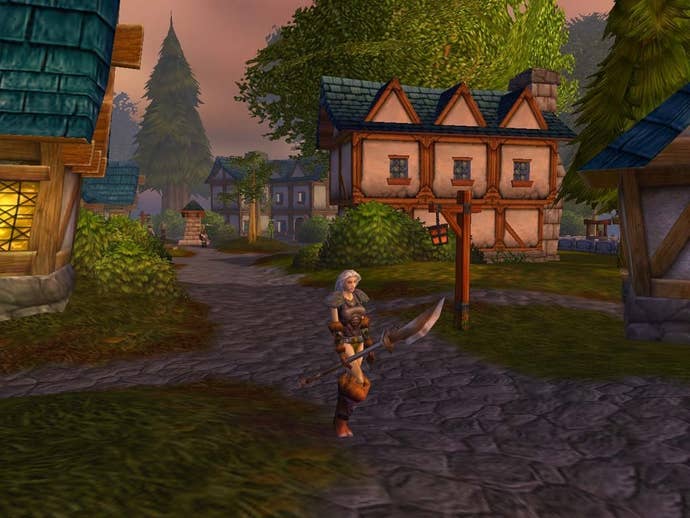
The change is in perspective, from an overhead camera to a third-person one, also forced Blizzard's artists to evolve. Now they have to come up with the feeling of each race. Orcs, humans, night elves, and more had to feel distinct from one another. And Blizzard had to sell players on the idea that you were a part of those cultures.
"When we were creating art for [Warcraft], it was all done with a god's eye view. In World of Warcraft, what does a Night Elf mailbox look like? It really let us create things that are mundane, but add feeling to the races. It allowed us to grow our art style, not just drawing shoulderpads and helmet tops, but seeing what they looked like standing in front of you. We had done such a small amount of the art for the other games; even though we had done it for ten years, we never got to really live in the world. It allows us to take the art that we had done and turn it into a 3D living environment," Didier muses.
Didier himself stepped back from directly contributing art on the Warcraft games with World of Warcraft's second expansion, Wrath of the Lich King. Since then he's overseen the games from a top-down view, but the artists have been free to evolve the Warcraft art style. Didier says the art of World of Warcraft, in particular, has become "even more vibrant and beautiful in terms of colors."
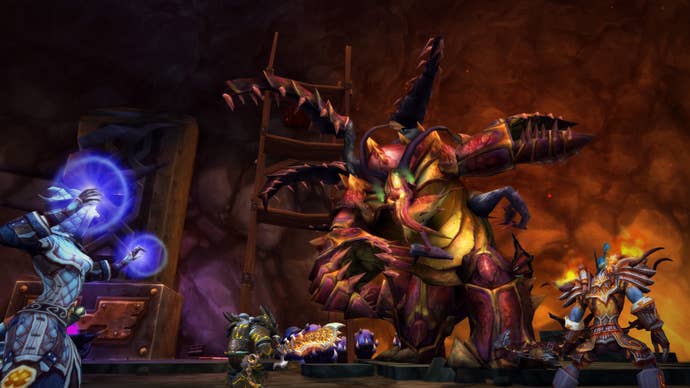
"I still think keeping things in the Warcraft style is good, but if we're allowed to go another step, and another step, that allows us to keep evolving the art style. To be doing art on [Warcraft] for 25 years is pretty crazy," Didier tells me. "Having a game that's lasted so long still be so impactful to people, it's not just about the art in the game. It's about the communities, the friends that we've built up through playing."
And Warcraft isn't just World of Warcraft. The brand covers the MMO, the original RTS games, the collectible card game Hearthstone, and host of merchandise. "And the art looks consistent in all of it, so you can immediately jump from one to the other and feel at home," says Didier. There's more coming on the horizon though. While World of Warcraft's latest expansion, Battle for Azeroth, enters its second year, Blizzard Entertainment is also working on World of Warcraft Classic, a jump back to the MMO's launch state, and Warcraft 3: Reforged, a visual overhaul of the original 2002 release. There's something for everyone in Didier's estimation.
"People who are into World of Warcraft and into Blizzard are enjoying the new content. People who have a nostalgia, there's Classic they can get into. It's like going and watching The Godfather again. There's all these great gangster movies that have come out, but Godfather still has a special place. WoW Classic is like that to me," Didier admits. "This is the one that took it, out of—they had Chuck Norris commercials! And for games like Warcraft 3 and Reforged—that game came out in 2002, it's a very old game—some people might have avoided that game. Back in the day, that was the best art around. Now you look at it, Reforged brings it up."
Our conversation turns to the overall longevity of the Warcraft name. Not many franchises last 25 years with solid success, let alone the 15 years World of Warcraft has been operating. With WoW, Didier believes the personal connection is key. "That's my character. When it does something great, I do something great," he says. But at the end of the day, he believes that real-time strategy is where the heart of Warcraft lies. Didier avoids saying that Warcraft 4 is coming, but note that fans asked for WoW Classic for years before it became a reality.
"I think Warcraft has its roots in RTS," he explains. "I'm super glad that Reforged is coming back. Nowadays a lot of people just play MOBAs, they're not familiar with RTS as much. Warcraft as an RTS, it's been a while. Reforged is a great step. We're not talking about Warcraft 4 or anything like that, but I think we've seen with WoW Classic that people really wanted that. I assume if people are into Warcraft 4, Blizzard's going to at least think about it. I know I'd love to work on it. Right now, we have Reforged, we have World of Warcraft and Classic; our plate's full."
At the end of our talk, I ask Didier how Warcraft will continue to be relevant in a future that's changing. Diablo is already going mobile with Diablo Immortal, but virtual reality and augmented reality are slowly becoming a part of gaming. Battle royale games like Fortnite and Apex Legends draw the headlines. How does Warcraft survive?
"One of the great things about Blizzard is while we're talking about Warcraft, 25 years of it, Diablo came out in 1996, Starcraft came out in 1998, Overwatch came out in 2016. We have four franchises and lots of games. We've had magic come to Blizzard many times. We stood up against other things back in the earlier years," Didier tells me. "Our Warcraft games were getting a lot of attention back when it was all about Super Nintendo games. We were able to compete with the Sonics and the Marios. I think a great game is a great game. Some days we'll be at the top, some days we may be below the newcomers. We love making the games that we want to make."
